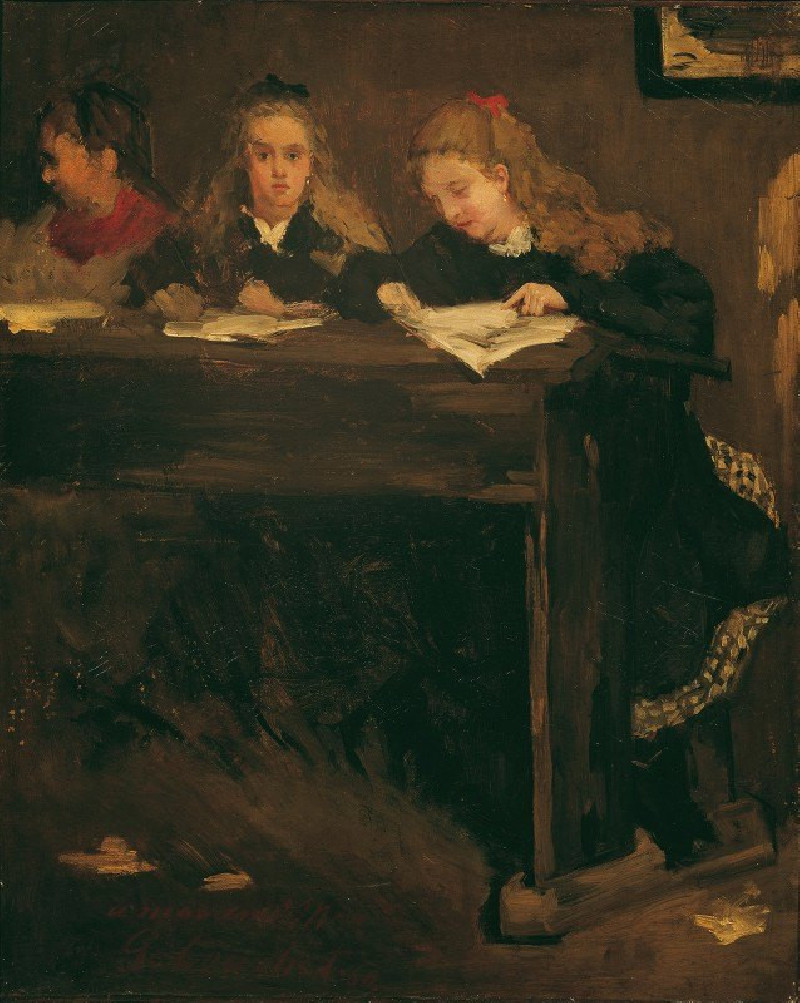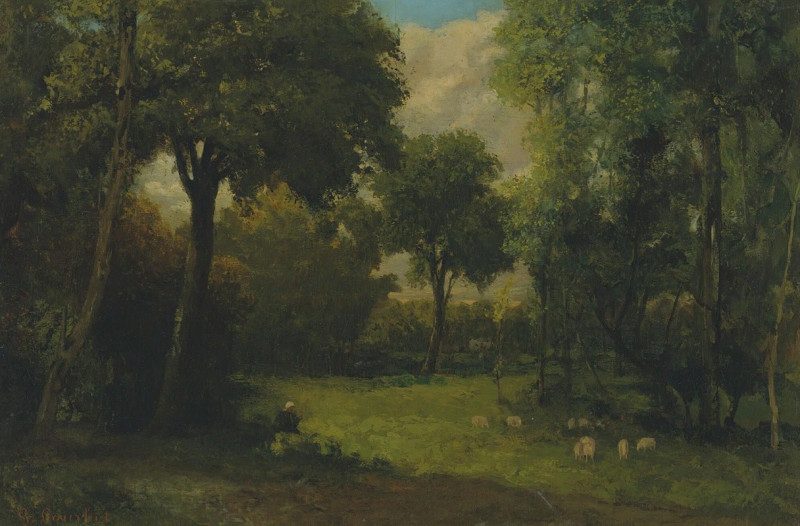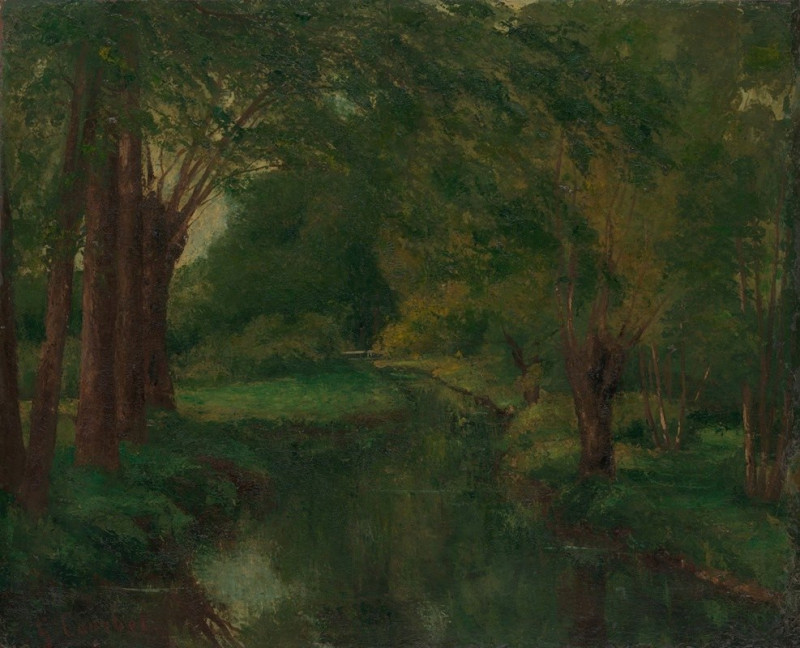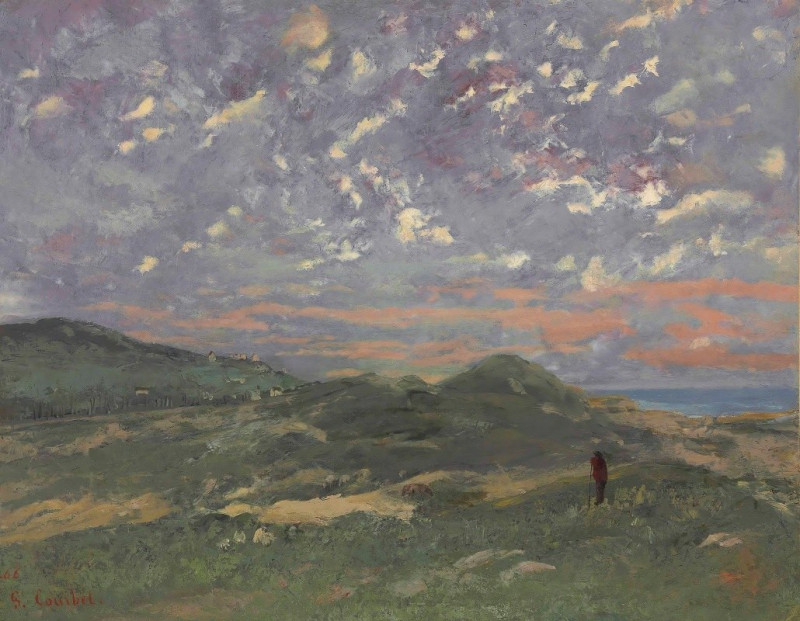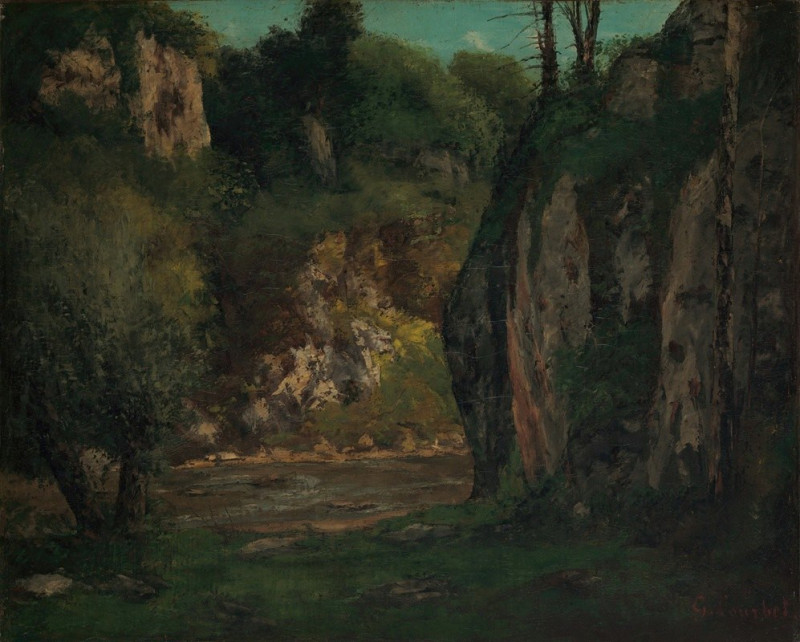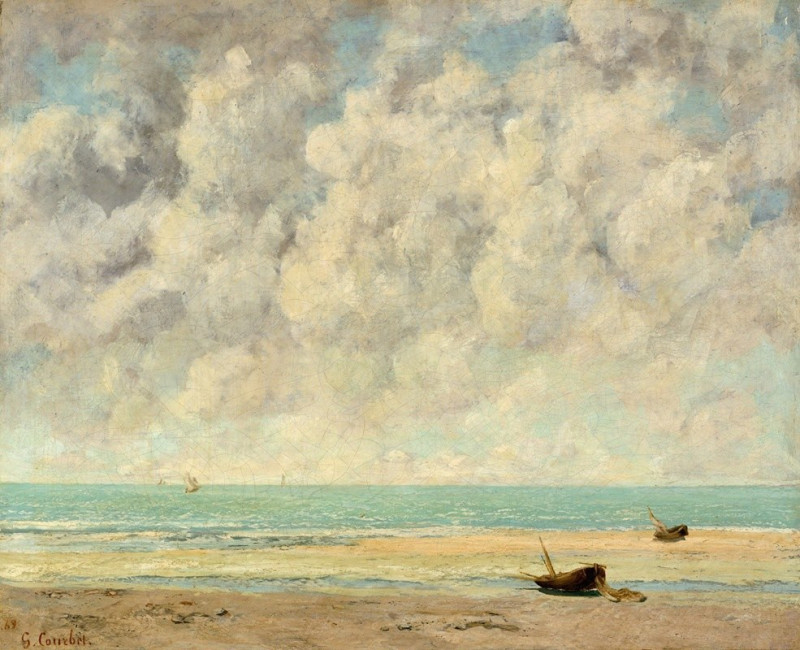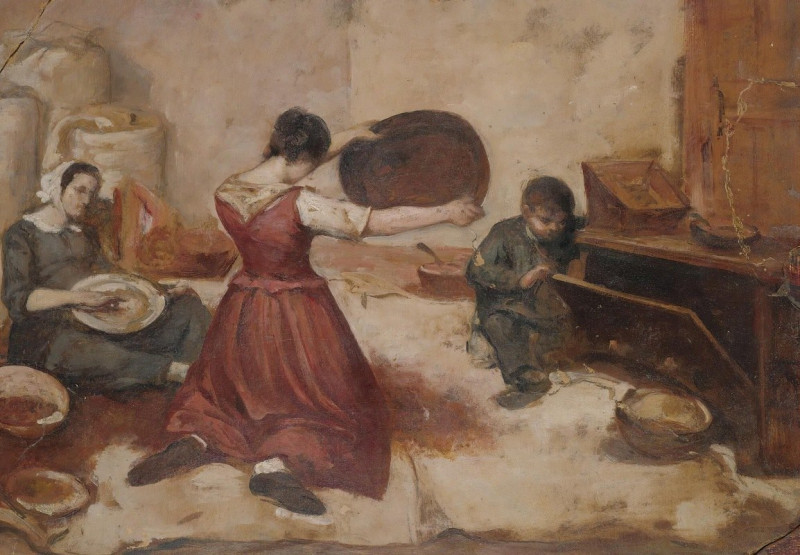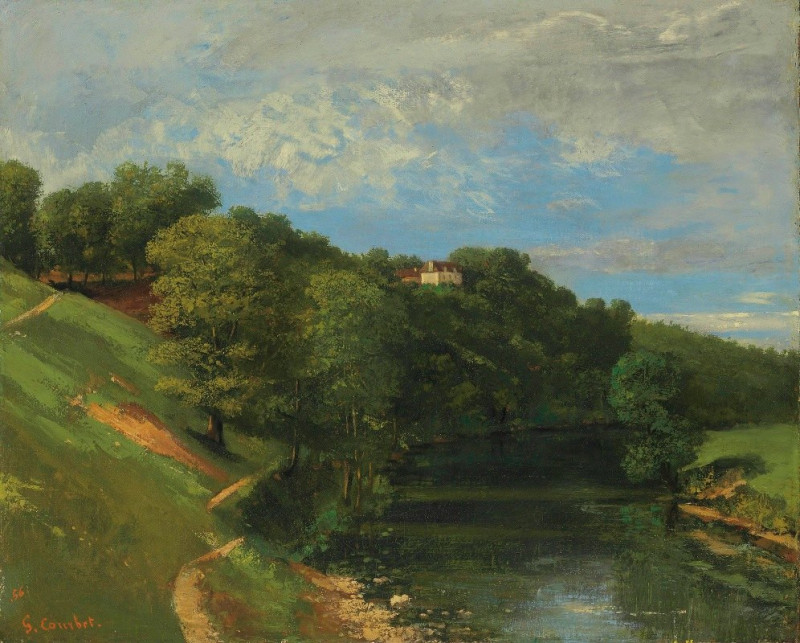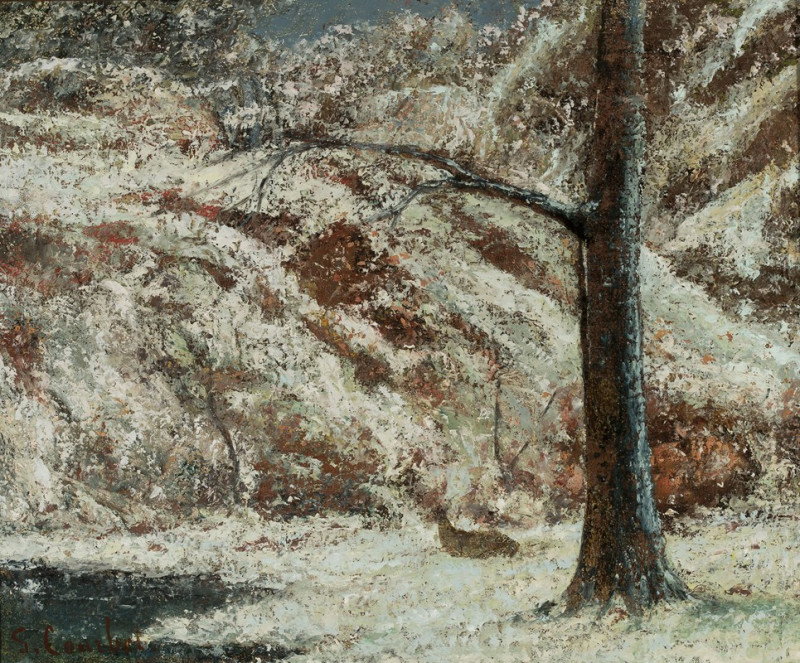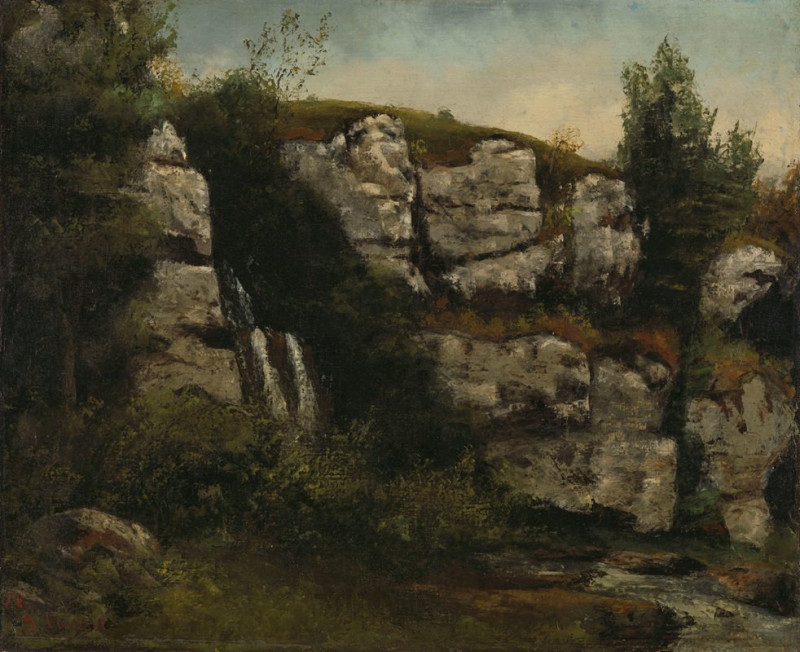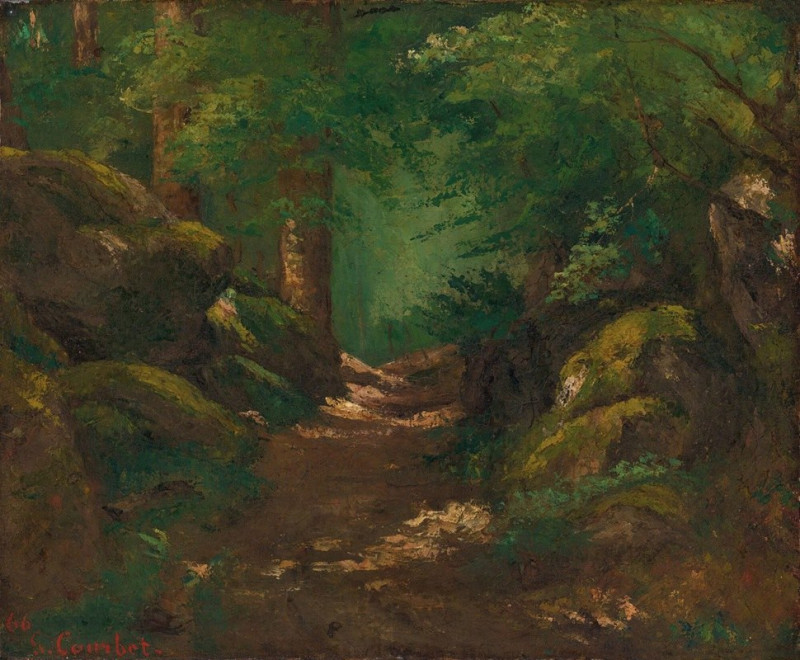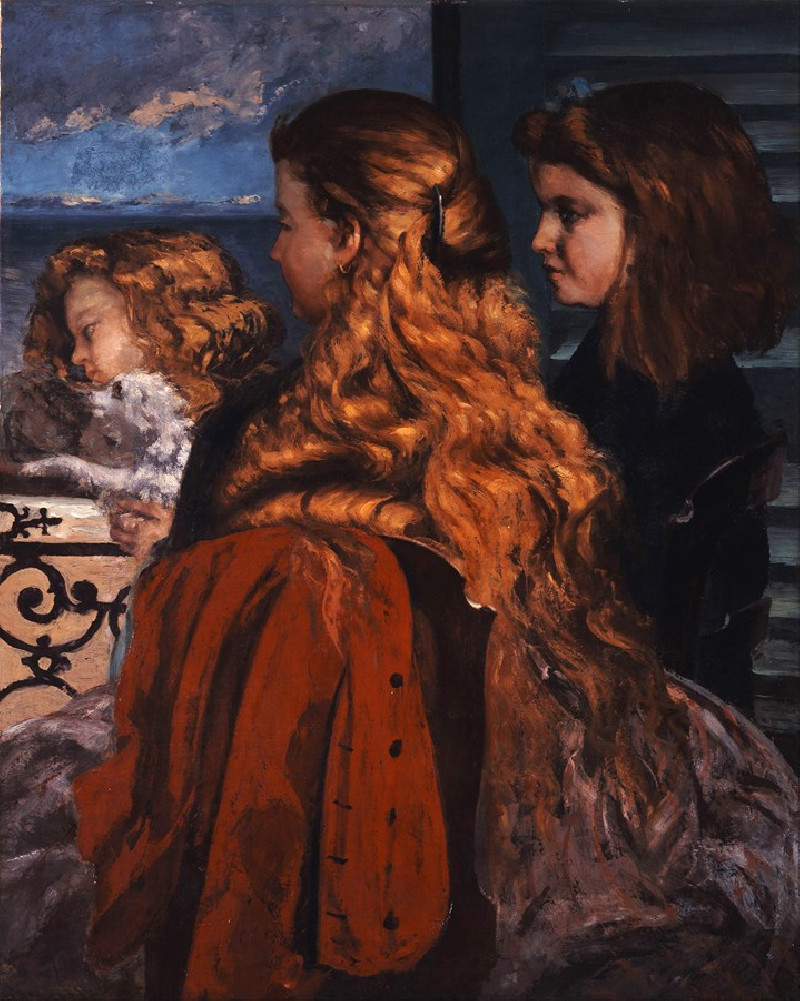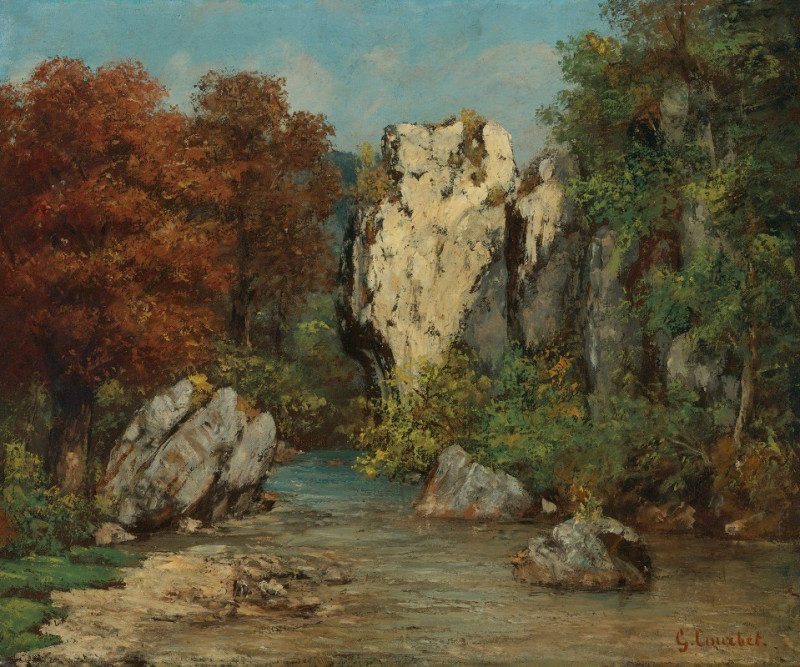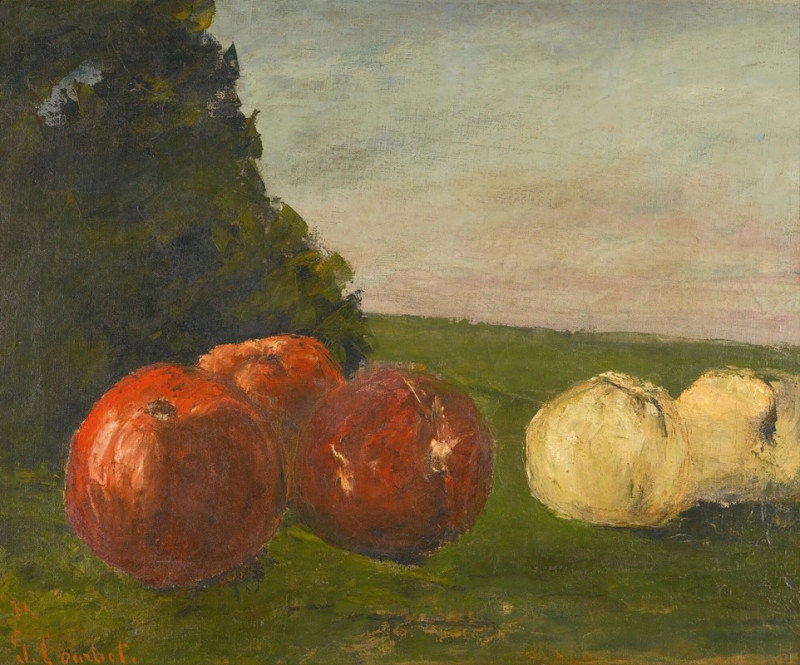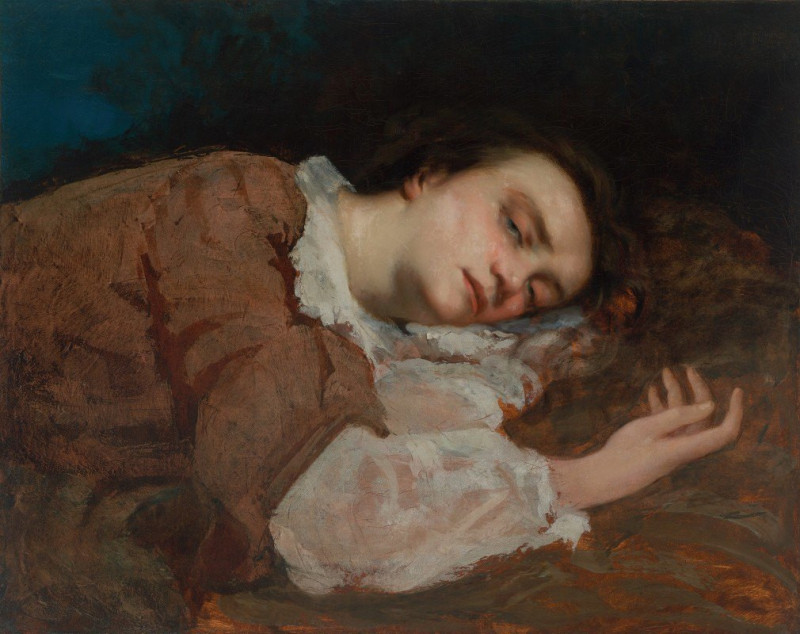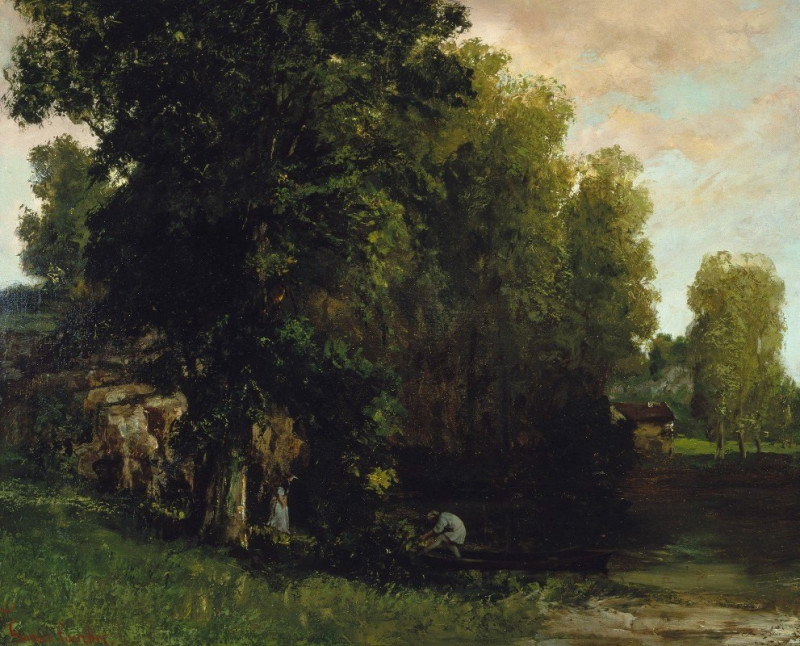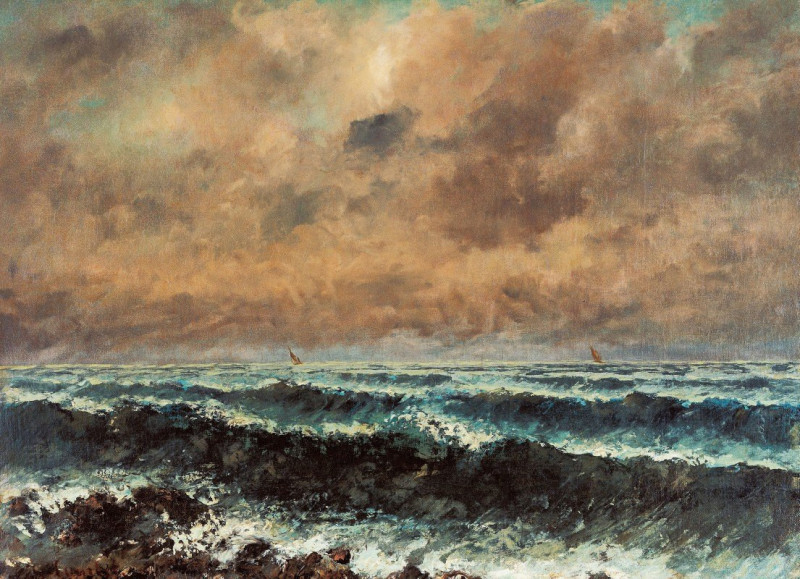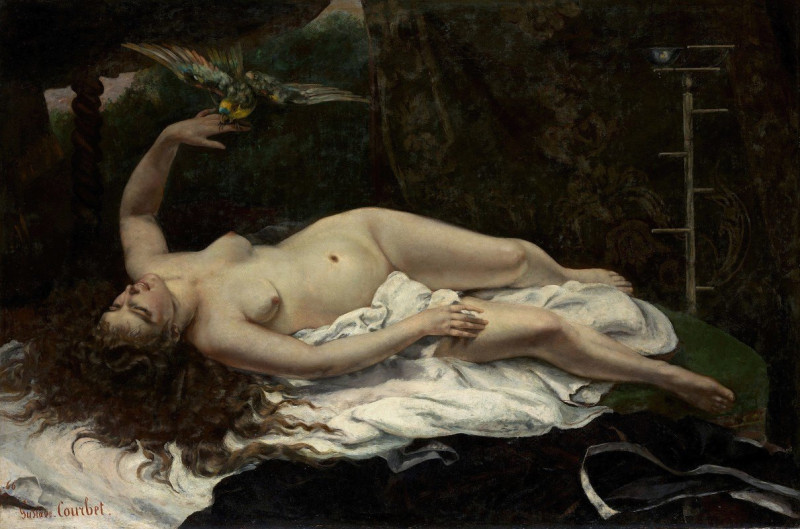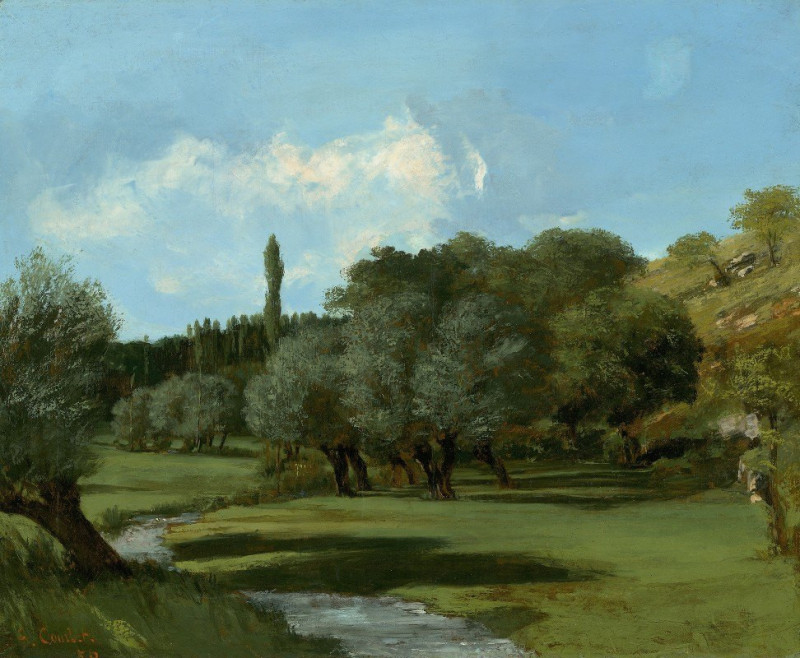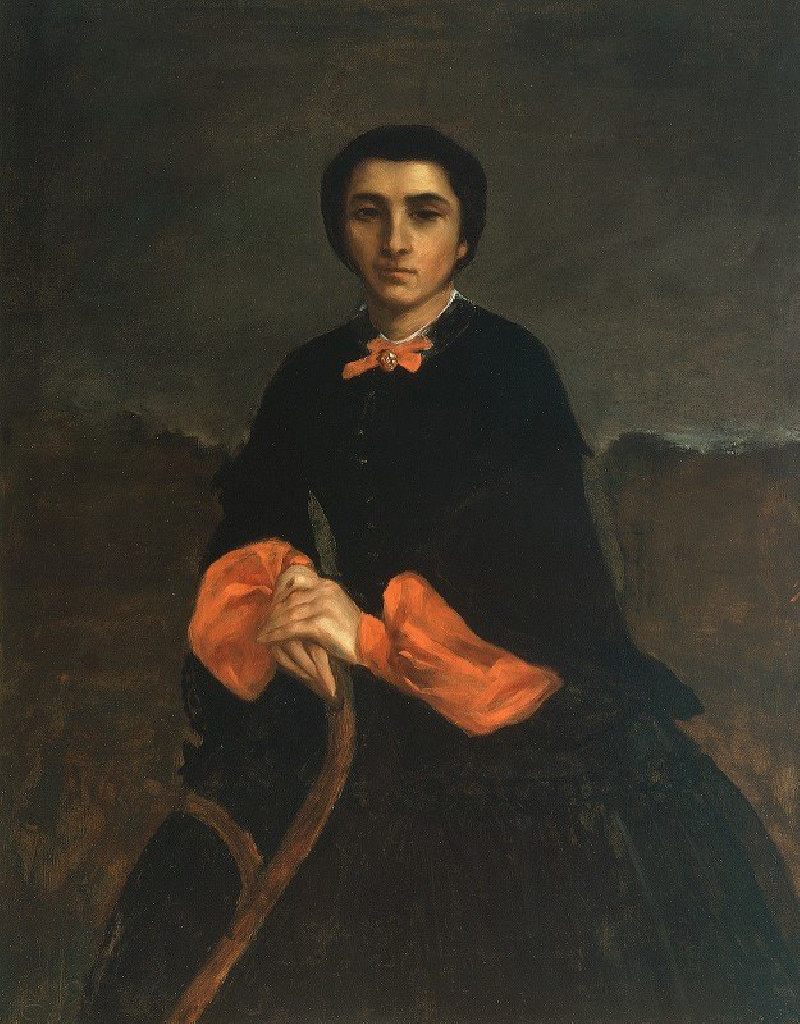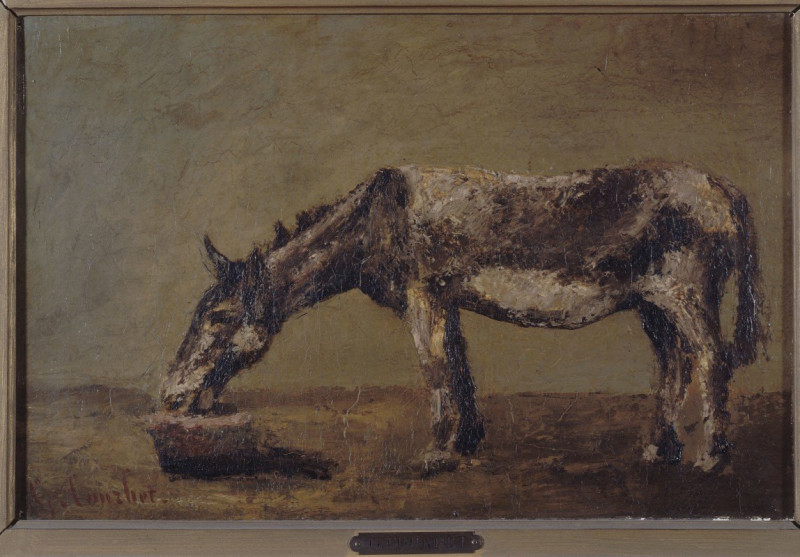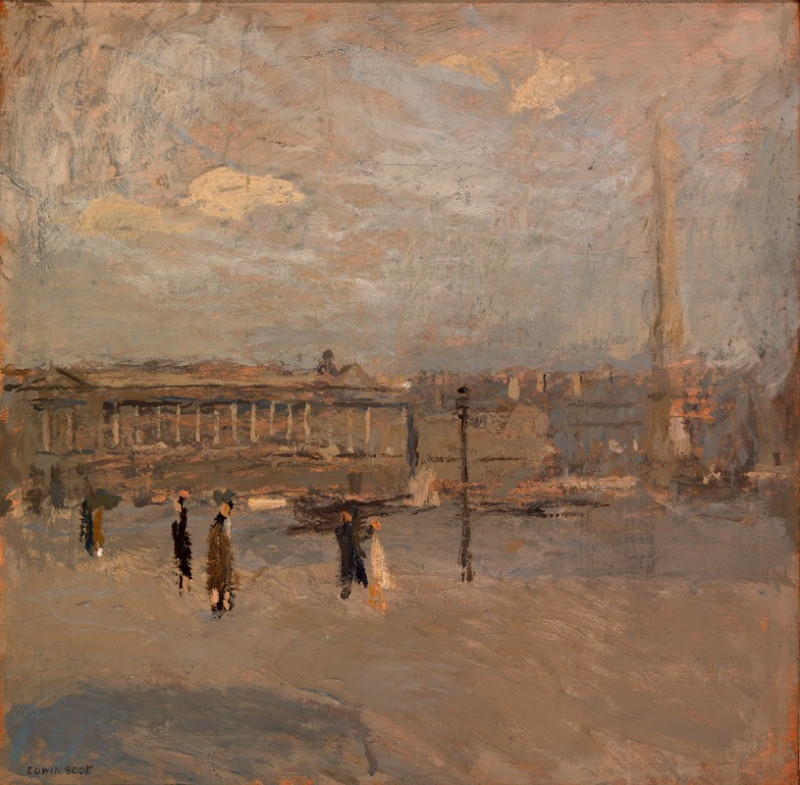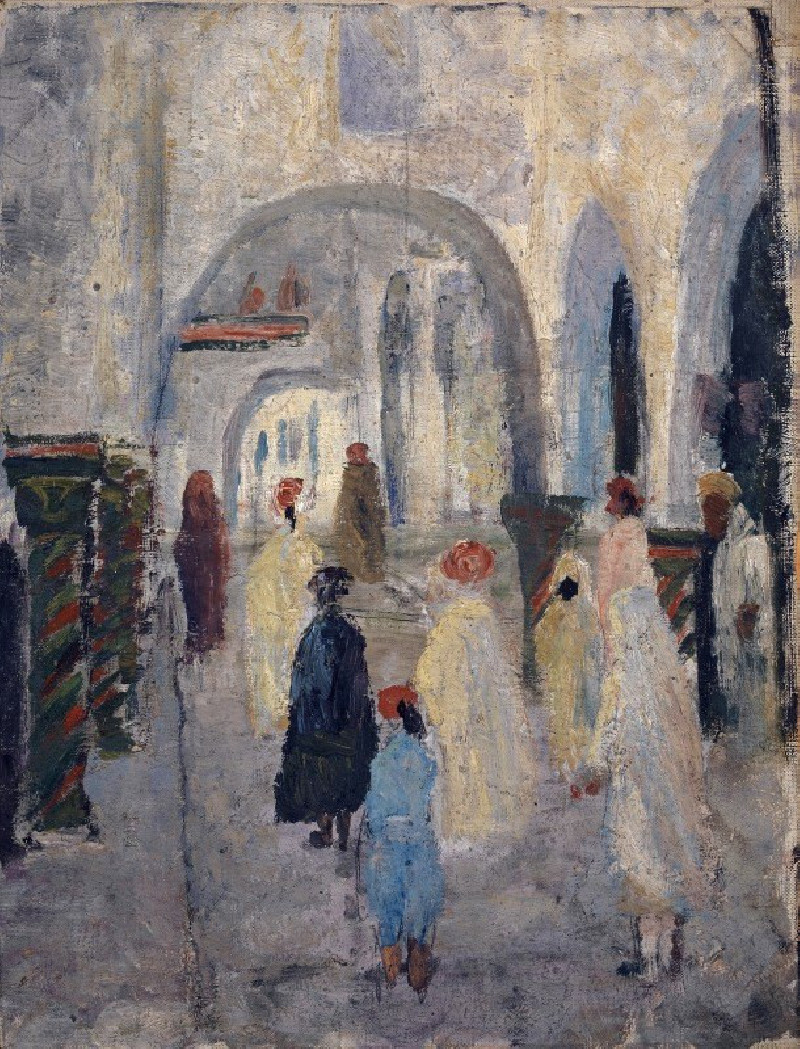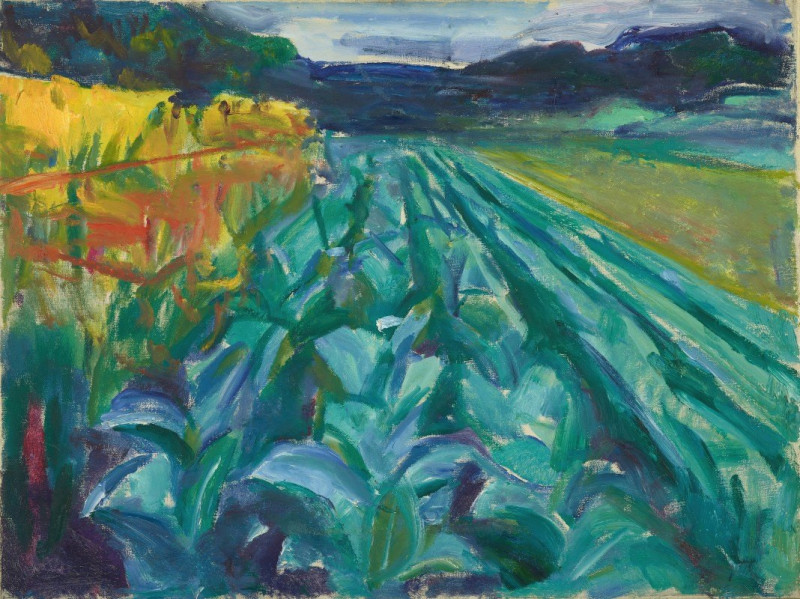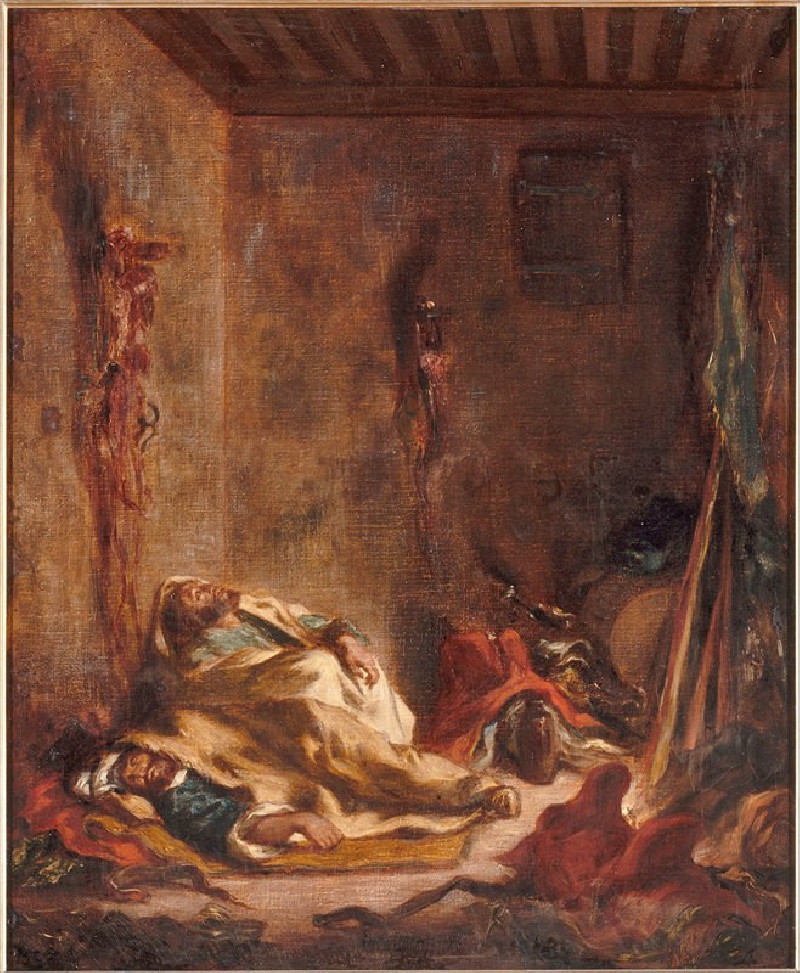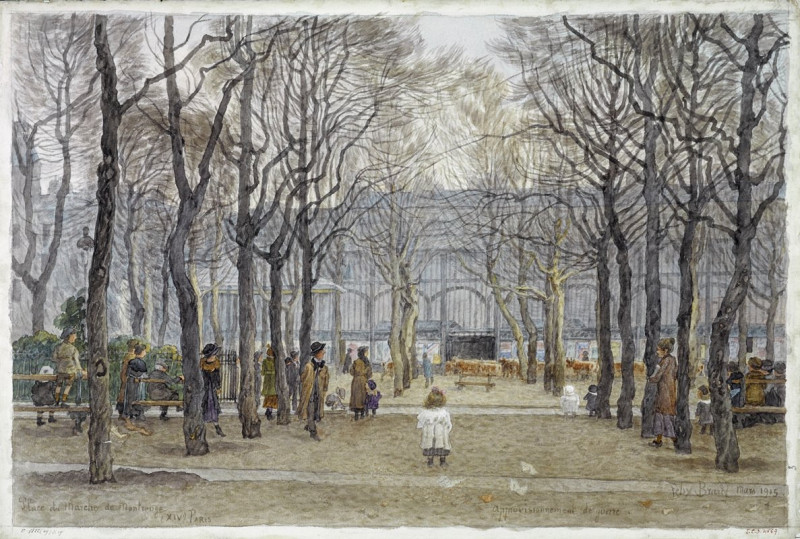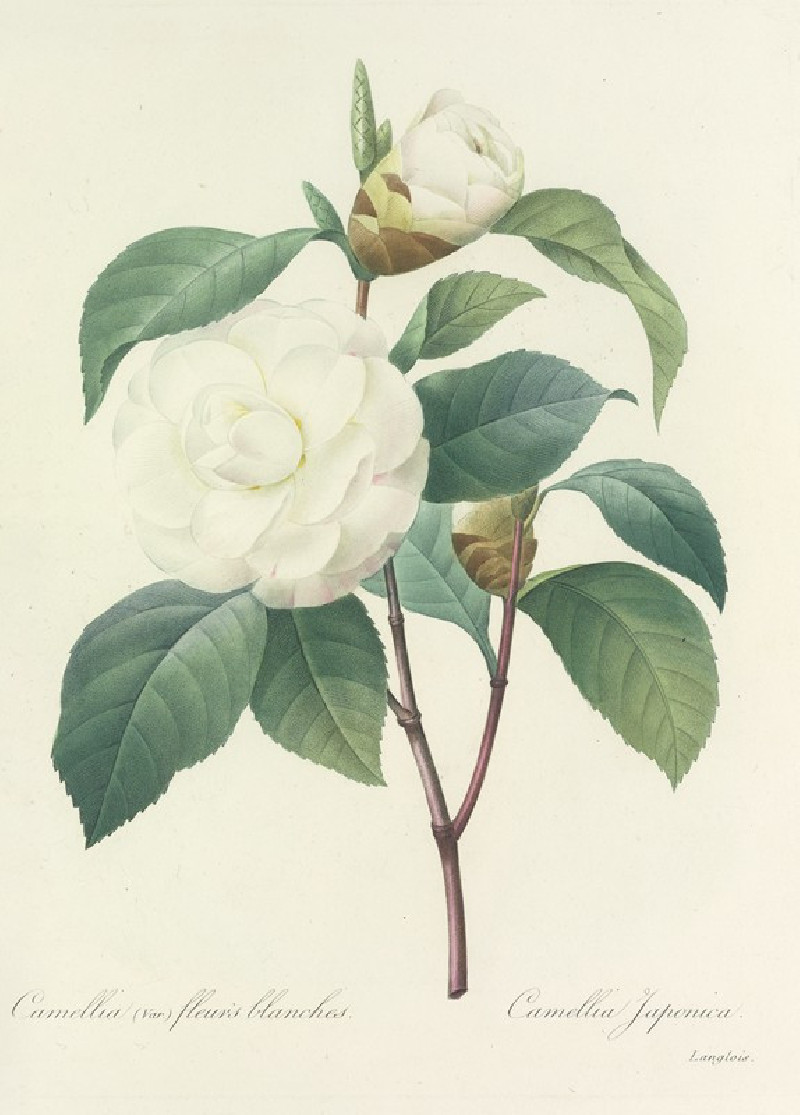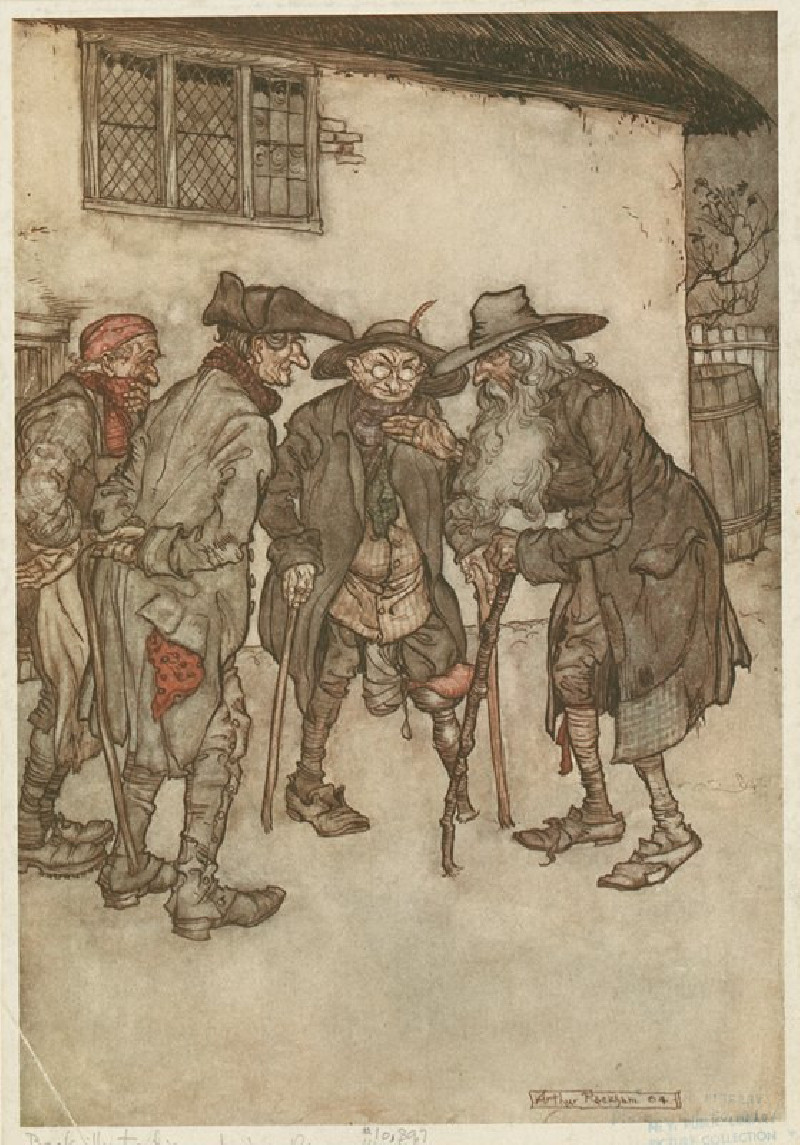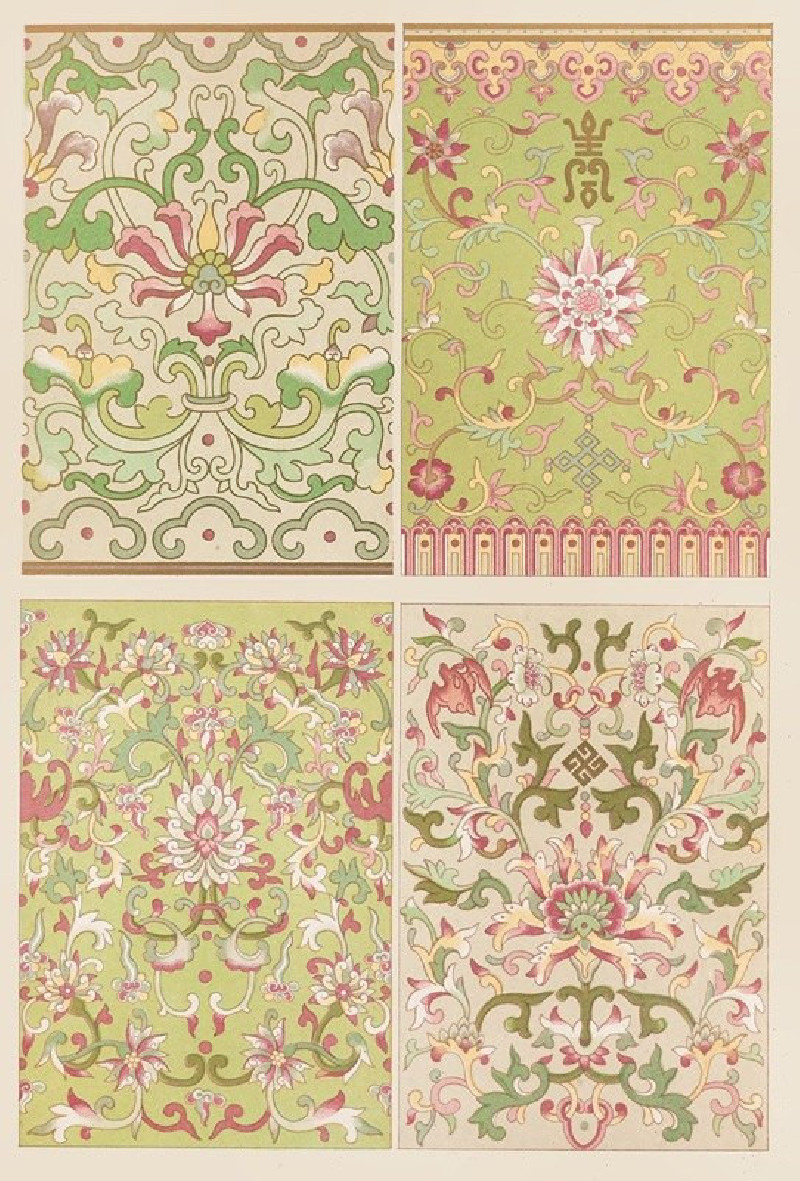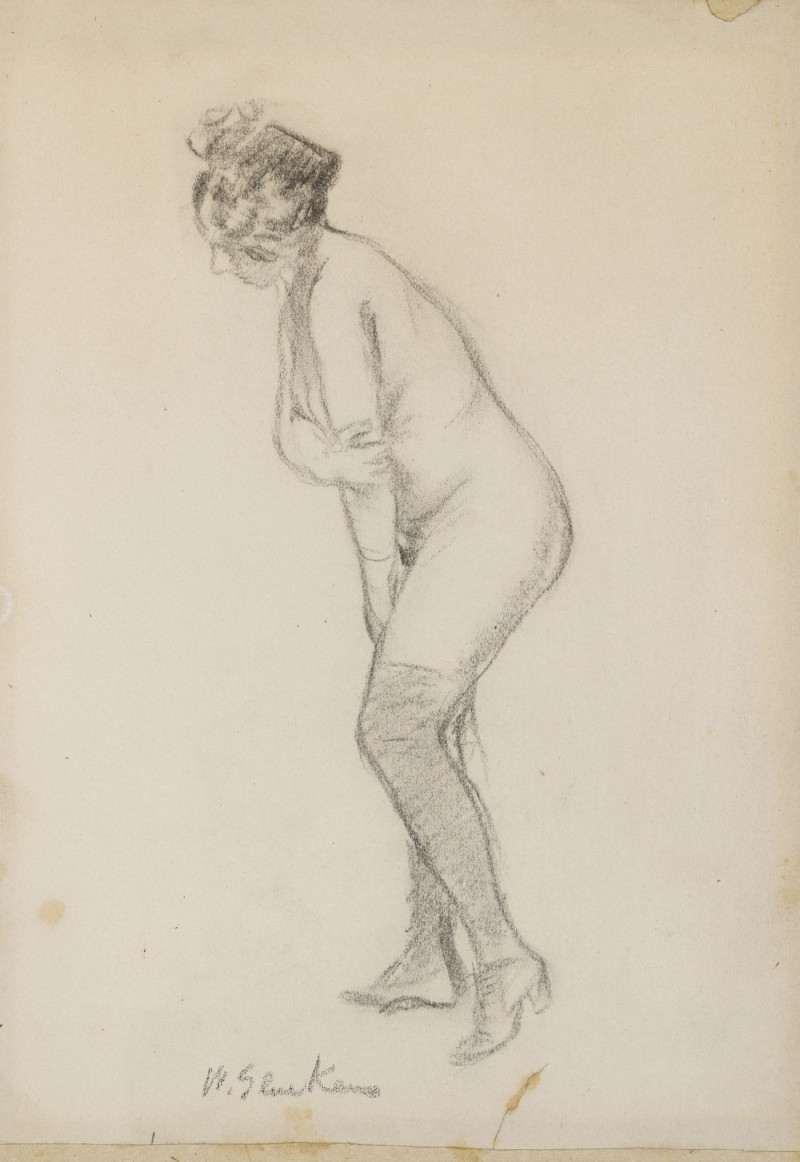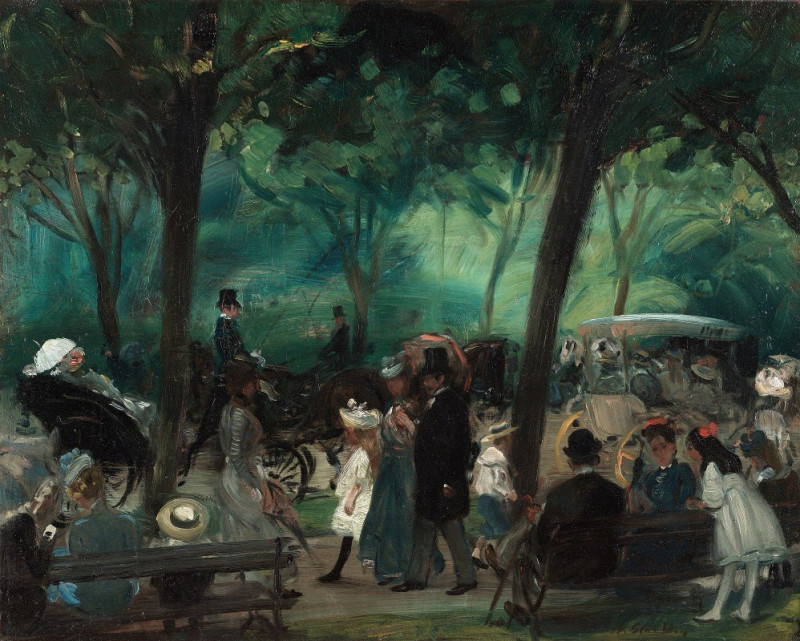Portrait de femme (1855)
Technique: Giclée quality print
Recommended by our customers
More about this artwork
Gustave Courbet's "Portrait de femme" from 1855 offers a profound and introspective look into the dignified elegance of an unknown woman. This painting showcases Courbet's mastery of realism and his ability to convey depth of character through portraiture. The subject, depicted in profile, is centered against a muted, darkly toned backdrop that enhances her visage, highlighting her serene and contemplative expression.The play of light and shadow on her features brings out the subtle nuances of her complexion, while her dark hair and the soft contour of her cheeks convey a gentle, calm demeanor. Wearing what appears to be a dress with a delicate, golden-trimmed collar, the woman carries an air of understated grace and poise.Although relatively simple in composition, the strength of this painting lies in its quiet intensity and the sense of intimacy it fosters with the viewer. The directness of the profile view paired with the rich, textured details of her attire exemplifies Courbet’s unique ability to deliver not just an image, but a vivid sense of presence.
Delivery
Returns
Jean Désiré Gustave Courbet (10 June 1819 – 31 December 1877) was a French painter who led the Realism movement in 19th-century French painting. Committed to painting only what he could see, he rejected academic convention and the Romanticism of the previous generation of visual artists. His independence set an example that was important to later artists, such as the Impressionists and the Cubists. Courbet occupies an important place in 19th-century French painting as an innovator and as an artist willing to make bold social statements through his work.




